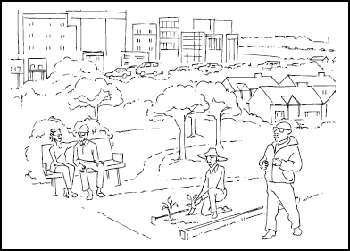Heart Disease, Stroke, and Outdoor Air Pollution
EPA-456/F-16-004
January 2016
View or print guide in PDF (2 pp., 439KB, about PDF)

1. Did you know that air pollution can trigger heart attacks, stroke, and other health effects?
Medical studies show that air pollution can trigger heart attacks, stroke, and irregular heart rhythms—especially in people who are already at risk for these conditions. Also, for people with a medical condition called heart failure, air pollution can further reduce the ability of the heart to pump blood the way that it should. Very small particles are the pollutants of greatest concern for triggering these effects. Particle pollution is found in haze, smoke, and dust—and sometimes in air that looks clean. This fact sheet tells you how you can:
- Get up-to-date information about your local air quality.
- Protect your health when particle pollution is at unhealthy levels.
2. Are you at higher risk?
Older adults and people with risk factors for heart disease or stroke may be at greater risk. You are at greater risk if you:
- Have had a heart attack, angina, bypass surgery, angioplasty with or without a stent, a stroke, blockages in the neck or leg arteries, heart failure, heart rhythm problems, diabetes, or chronic obstructive lung disease.
You may be at greater risk of heart disease or stroke (and therefore at greater risk from particle pollution) if any of these apply:
- You are a man 45 years or older, or a woman 55 years or older.
- You have a family history of stroke or early heart disease (father or brother diagnosed before age 55; mother or sister diagnosed before age 65).
- You have high blood pressure or high blood cholesterol.
- You are overweight or not physically active.
- You smoke cigarettes.
3. How can you protect your health?
Regular exercise is important for staying healthy, especially if you have heart disease. By adjusting when and where you exercise, you can lead a healthier lifestyle and help reduce your risk of heart problems or stroke triggered by air pollution. In addition:
- If you have heart disease or have experienced a stroke, check with your health care provider about the best ways to protect your health when the air quality is unhealthy.
- If you’re at risk of heart disease or stroke and plan to exercise more than usual, discuss this with your health care provider.
» Know when and where particle pollution levels may be unhealthy.
Particle pollution levels can be high any time of year. Particle levels can also be high:
- Near busy roads, in urban areas (especially during rush hour), and in industrial areas.
- When there is smoke in the air from wood stoves, fireplaces, burning vegetation, or forest fires.
» Plan activities when and where pollution levels are lower.
- Avoid exercising near busy roads or industrial areas.
- When particle levels outdoors are unhealthy, delay your activity until the air is cleaner or move your activity indoors.
» Change your activity level. When the air is polluted, take it a little easier. This will reduce how much pollution you breathe. For example, go for a walk instead of a jog.
» Reduce your overall risk of heart disease or stroke.
- Make lifestyle changes like eating healthy foods, exercising more, and stopping smoking.
- Work with your health care provider to treat conditions that increase your risk of heart disease and stroke.
» Know the warning signs of heart attack and stroke (see box below). If you feel symptoms, even if they go away, stop your activity and seek medical help immediately!
4. Get up-to-date information about your local air quality
Sometimes you can tell that the air is polluted— for example, on a smoggy or hazy day. But often you can’t see the pollution. In many areas, you can find air quality forecasts and reports on local TV, radio, or in the newspaper. These reports use the Air Quality Index, a simple color scale, to tell you how clean or polluted the air is. You can also find these reports on the Internet at: airnow.gov.
Sign up for air quality emails or get the AirNow app at airnow.gov. These free services will alert you when your local air quality reaches levels of concern and can help you plan your daily activities.
5. For More Information
Air quality and health:
- Air quality forecasts at airnow.gov
- Healthy Heart at bit.ly/epahealthyheart
Heart disease and stroke:
- American Heart Association at www.heart.org

- American Stroke Association at www.strokeassociation.org

- Center for Disease Control and Prevention at: www.cdc.gov/heartdisease/

Know the warning signs of a heart attack:→ Chest discomfort: uncomfortable pressure, fullness, squeezing, or pain in the center of the chest that lasts more than a few minutes, or goes away and comes back. → Discomfort in other areas of the upper body: pain or discomfort in one or both arms, the back, neck, jaw or stomach. → Shortness of breath: often comes with or without chest discomfort. → Other signs: may include breaking out in a cold sweat, nausea, or light-headedness. Use FAST to remember the warning signs of a stroke:F FACE: Ask the person to smile. Does one side of the face droop? A ARM: Ask the person to raise both arms. Does one arm drift downward? S SPEECH: Ask the person to repeat a simple phrase. Is their speech slurred or strange? T TIME: If you observe any of these signs, call 9-1-1 immediately. Reprinted with permission © 2015 American Heart Association, Inc. |
 |
